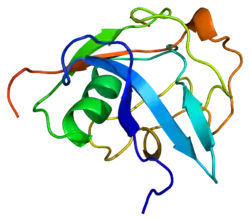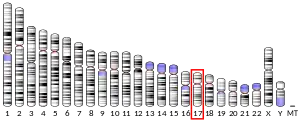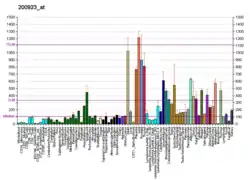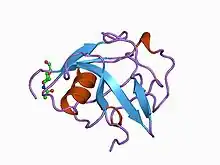| LGALS3BP | |||||||||||||||||||||||||||||||||||||||||||||||||||
|---|---|---|---|---|---|---|---|---|---|---|---|---|---|---|---|---|---|---|---|---|---|---|---|---|---|---|---|---|---|---|---|---|---|---|---|---|---|---|---|---|---|---|---|---|---|---|---|---|---|---|---|
 | |||||||||||||||||||||||||||||||||||||||||||||||||||
| |||||||||||||||||||||||||||||||||||||||||||||||||||
| Identifiers | |||||||||||||||||||||||||||||||||||||||||||||||||||
| Aliases | LGALS3BP, 90K, BTBD17B, CyCAP, M2BP, MAC-2-BP, TANGO10B, gp90, galectin 3 binding protein | ||||||||||||||||||||||||||||||||||||||||||||||||||
| External IDs | OMIM: 600626 MGI: 99554 HomoloGene: 4067 GeneCards: LGALS3BP | ||||||||||||||||||||||||||||||||||||||||||||||||||
| |||||||||||||||||||||||||||||||||||||||||||||||||||
| |||||||||||||||||||||||||||||||||||||||||||||||||||
| |||||||||||||||||||||||||||||||||||||||||||||||||||
| |||||||||||||||||||||||||||||||||||||||||||||||||||
| |||||||||||||||||||||||||||||||||||||||||||||||||||
| Wikidata | |||||||||||||||||||||||||||||||||||||||||||||||||||
| |||||||||||||||||||||||||||||||||||||||||||||||||||
Galectin-3-binding protein is a protein that in humans is encoded by the LGALS3BP gene.[5][6][7][8]
Function
The galectins are a family of beta-galactoside-binding proteins implicated in modulating cell–cell and cell–matrix interactions. Using fluorescence in–situ hybridization, the full length 90K cDNA has been localized to chromosome 17q25. The native protein binds specifically to a human macrophage-associated lectin known as Mac-2 and also binds to galectin 1.[8]
Clinical significance
LGALS3BP has been found elevated in the serum of patients with cancer and in those infected by the human immunodeficiency virus (HIV). It appears to be implicated in immune response associated with natural killer (NK) and lymphokine-activated killer (LAK) cell cytotoxicity.[8]
Interactions
References
- 1 2 3 GRCh38: Ensembl release 89: ENSG00000108679 - Ensembl, May 2017
- 1 2 3 GRCm38: Ensembl release 89: ENSMUSG00000033880 - Ensembl, May 2017
- ↑ "Human PubMed Reference:". National Center for Biotechnology Information, U.S. National Library of Medicine.
- ↑ "Mouse PubMed Reference:". National Center for Biotechnology Information, U.S. National Library of Medicine.
- ↑ Calabrese G, Sures I, Pompetti F, Natoli G, Palka G, Iacobelli S (May 1995). "The gene (LGALS3BP) encoding the serum protein 90K, associated with cancer and infection by the human immunodeficiency virus, maps at 17q25". Cytogenet Cell Genet. 69 (3–4): 223–5. doi:10.1159/000133969. PMID 7698018.
- ↑ Ullrich A, Sures I, D'Egidio M, Jallal B, Powell TJ, Herbst R, Dreps A, Azam M, Rubinstein M, Natoli C, et al. (Aug 1994). "The secreted tumor-associated antigen 90K is a potent immune stimulator". J Biol Chem. 269 (28): 18401–7. doi:10.1016/S0021-9258(17)32322-0. PMID 8034587.
- 1 2 Koths K, Taylor E, Halenbeck R, Casipit C, Wang A (July 1993). "Cloning and characterization of a human Mac-2-binding protein, a new member of the superfamily defined by the macrophage scavenger receptor cysteine-rich domain". J. Biol. Chem. 268 (19): 14245–9. doi:10.1016/S0021-9258(19)85233-X. PMID 8390986.
- 1 2 3 "Entrez Gene: LGALS3BP lectin, galactoside-binding, soluble, 3 binding protein".
- ↑ Rosenberg I, Cherayil BJ, Isselbacher KJ, Pillai S (October 1991). "Mac-2-binding glycoproteins. Putative ligands for a cytosolic beta-galactoside lectin". J. Biol. Chem. 266 (28): 18731–6. doi:10.1016/S0021-9258(18)55124-3. PMID 1917996.
- ↑ Tinari N, Kuwabara I, Huflejt ME, Shen PF, Iacobelli S, Liu FT (January 2001). "Glycoprotein 90K/MAC-2BP interacts with galectin-1 and mediates galectin-1-induced cell aggregation". Int. J. Cancer. 91 (2): 167–72. doi:10.1002/1097-0215(200002)9999:9999<::AID-IJC1022>3.3.CO;2-Q. PMID 11146440.
Further reading
- Grassadonia A, Tinari N, Iurisci I, et al. (2004). "90K (Mac-2 BP) and galectins in tumor progression and metastasis". Glycoconj. J. 19 (7–9): 551–6. doi:10.1023/B:GLYC.0000014085.00706.d4. PMID 14758079. S2CID 8981436.
- Rosenberg I, Cherayil BJ, Isselbacher KJ, Pillai S (1991). "Mac-2-binding glycoproteins. Putative ligands for a cytosolic beta-galactoside lectin". J. Biol. Chem. 266 (28): 18731–6. doi:10.1016/S0021-9258(18)55124-3. PMID 1917996.
- Yu B, Wright SD (1995). "LPS-dependent interaction of Mac-2-binding protein with immobilized CD14". J. Inflamm. 45 (2): 115–25. PMID 7583357.
- Koths K, Taylor E, Halenbeck R, et al. (1993). "Cloning and characterization of a human Mac-2-binding protein, a new member of the superfamily defined by the macrophage scavenger receptor cysteine-rich domain". J. Biol. Chem. 268 (19): 14245–9. doi:10.1016/S0021-9258(19)85233-X. PMID 8390986.
- Inohara H, Akahani S, Koths K, Raz A (1996). "Interactions between galectin-3 and Mac-2-binding protein mediate cell-cell adhesion". Cancer Res. 56 (19): 4530–4. PMID 8813152.
- Brakebusch C, Jallal B, Fusco O, et al. (1997). "Expression of the 90K immunostimulator gene is controlled by a promoter with unique features". J. Biol. Chem. 272 (6): 3674–82. doi:10.1074/jbc.272.6.3674. PMID 9013622.
- Fusco O, Querzoli P, Nenci I, et al. (1998). "90K (MAC-2 BP) gene expression in breast cancer and evidence for the production of 90K by peripheral-blood mononuclear cells". Int. J. Cancer. 79 (1): 23–6. doi:10.1002/(SICI)1097-0215(19980220)79:1<23::AID-IJC5>3.0.CO;2-Y. PMID 9495353.
- Sasaki T, Brakebusch C, Engel J, Timpl R (1998). "Mac-2 binding protein is a cell-adhesive protein of the extracellular matrix which self-assembles into ring-like structures and binds beta1 integrins, collagens and fibronectin". EMBO J. 17 (6): 1606–13. doi:10.1093/emboj/17.6.1606. PMC 1170508. PMID 9501082.
- Trahey M, Weissman IL (1999). "Cyclophilin C-associated protein: a normal secreted glycoprotein that down-modulates endotoxin and proinflammatory responses in vivo". Proc. Natl. Acad. Sci. U.S.A. 96 (6): 3006–11. Bibcode:1999PNAS...96.3006T. doi:10.1073/pnas.96.6.3006. PMC 15885. PMID 10077627.
- Tinari N, Kuwabara I, Huflejt ME, et al. (2001). "Glycoprotein 90K/MAC-2BP interacts with galectin-1 and mediates galectin-1-induced cell aggregation". Int. J. Cancer. 91 (2): 167–72. doi:10.1002/1097-0215(200002)9999:9999<::AID-IJC1022>3.3.CO;2-Q. PMID 11146440.
- Hellstern S, Sasaki T, Fauser C, et al. (2002). "Functional studies on recombinant domains of Mac-2-binding protein". J. Biol. Chem. 277 (18): 15690–6. doi:10.1074/jbc.M200386200. PMID 11867635.
- Marchetti A, Tinari N, Buttitta F, et al. (2002). "Expression of 90K (Mac-2 BP) correlates with distant metastasis and predicts survival in stage I non-small cell lung cancer patients". Cancer Res. 62 (9): 2535–9. PMID 11980646.
- Strausberg RL, Feingold EA, Grouse LH, et al. (2003). "Generation and initial analysis of more than 15,000 full-length human and mouse cDNA sequences". Proc. Natl. Acad. Sci. U.S.A. 99 (26): 16899–903. Bibcode:2002PNAS...9916899M. doi:10.1073/pnas.242603899. PMC 139241. PMID 12477932.
- Zhang H, Li XJ, Martin DB, Aebersold R (2003). "Identification and quantification of N-linked glycoproteins using hydrazide chemistry, stable isotope labeling and mass spectrometry". Nat. Biotechnol. 21 (6): 660–6. doi:10.1038/nbt827. PMID 12754519. S2CID 581283.
- Ota T, Suzuki Y, Nishikawa T, et al. (2004). "Complete sequencing and characterization of 21,243 full-length human cDNAs". Nat. Genet. 36 (1): 40–5. doi:10.1038/ng1285. PMID 14702039.
- Bouwmeester T, Bauch A, Ruffner H, et al. (2004). "A physical and functional map of the human TNF-alpha/NF-kappa B signal transduction pathway". Nat. Cell Biol. 6 (2): 97–105. doi:10.1038/ncb1086. PMID 14743216. S2CID 11683986.
- Kristiansen TZ, Bunkenborg J, Gronborg M, et al. (2005). "A proteomic analysis of human bile". Mol. Cell. Proteomics. 3 (7): 715–28. doi:10.1074/mcp.M400015-MCP200. PMID 15084671.
This article is issued from Wikipedia. The text is licensed under Creative Commons - Attribution - Sharealike. Additional terms may apply for the media files.





